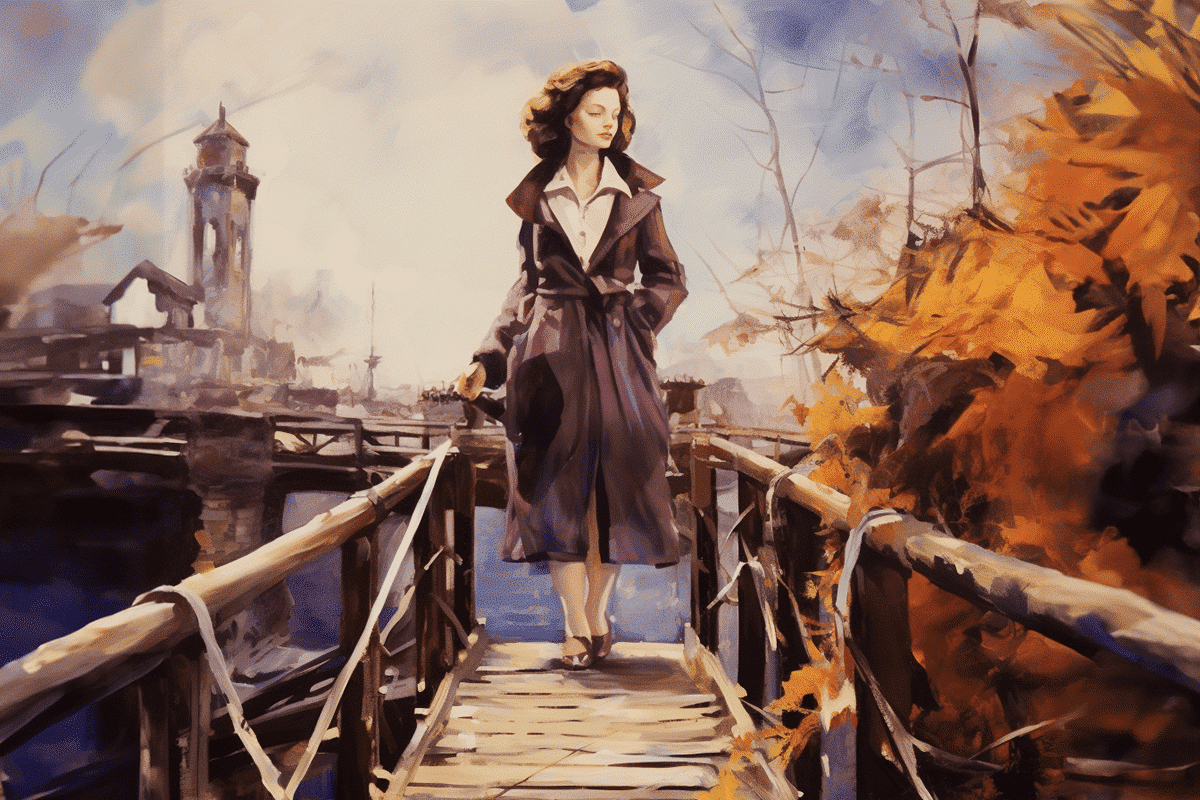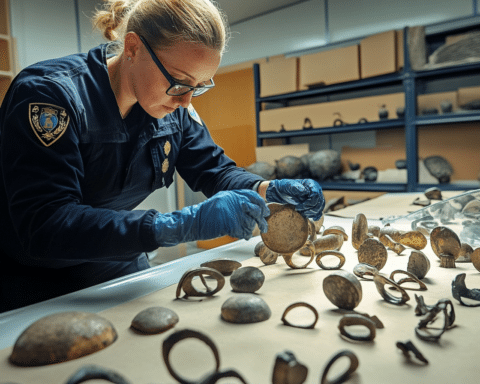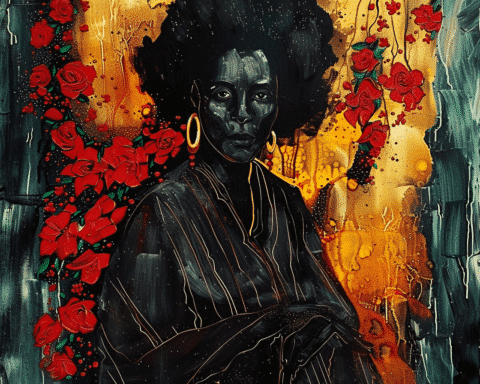In the bustling heart of London, a unique artistic experience awaits visitors at the Pace Gallery. Here, one steps into a mystical forest, an immersive world crafted by the visionary Polish artist Paulina Olowska. This 47-year-old artist, renowned for her multifaceted approach that blends fashion, Eastern European socialism, and American consumerism, has created a fascinating environment that transcends traditional art forms. Olowska’s work, which now graces the prestigious halls of the Museum of Modern Art in New York, is a testament to her innovative exploration of femininity and folklore.
“I would never have made these paintings if I wasn’t living in the middle of the forest,” Paulina Olowska muses, reflecting on her life in the Polish town of Rabka-Zdrój. This setting has profoundly influenced her art, shifting her focus from the urban post-communist landscape of Warsaw to the enchanting realms of Slavic mythology and folklore. Her “Sweater” paintings, rooted in images from vintage knitting patterns, signify a departure from her “modernism time,” where she drew inspiration from 1960s and 1970s socialist ideas.
The exhibition at Pace, “Squelchy Garden Mules and Mamunas,” presents a unique fusion of these influences. Olowska reimagines the Mamuna, a female swamp demon from Slavic lore, in a less ominous, more feminist light, integrating elements from other folk tales, like the wolf-taming huntress goddess Dziewanna. Inspired by fashion shoots for publications such as Polish Vogue, these creations showcase Olowska’s distinctive blend of mythology and modern fashion sensibilities.
Karine Haimo of Pace Gallery lauds Olowska for immersing viewers in her distinctive universe. Art collector Patrizia Sandretto Re Rebaudengo echoes this sentiment, captivated by Olowska’s blend of history, fashion, and femininity. Olowska’s collaborations with fashion photographer Kacper Kasprzyk and knitwear designer Monia Kucel further illustrate her multidisciplinary approach, integrating fashion, sculpture, and video.
Beyond her creations, Olowska fosters a community of artistic exchange at Artist House Kadenówka in Rabka-Zdrój. This cultural retreat, hosting exhibitions and preserving Polish folk art, epitomizes her commitment to collaborative creativity. Meanwhile, her exhibition at Turin’s Fondazione Sandretto Re Rebaudengo explores themes of desire and eroticism from a female perspective, expanding her artistic dialogue.
Paulina Olowska’s artistic journey is a captivating blend of personal experience, cultural heritage, and creative exploration. Her work, transcending conventional boundaries, invites viewers into a world where folklore, feminism, and fashion intersect. As her exhibitions continue to captivate audiences worldwide, Olowska remains a seminal figure in contemporary art, reshaping our understanding of femininity, folklore, and artistic expression.




